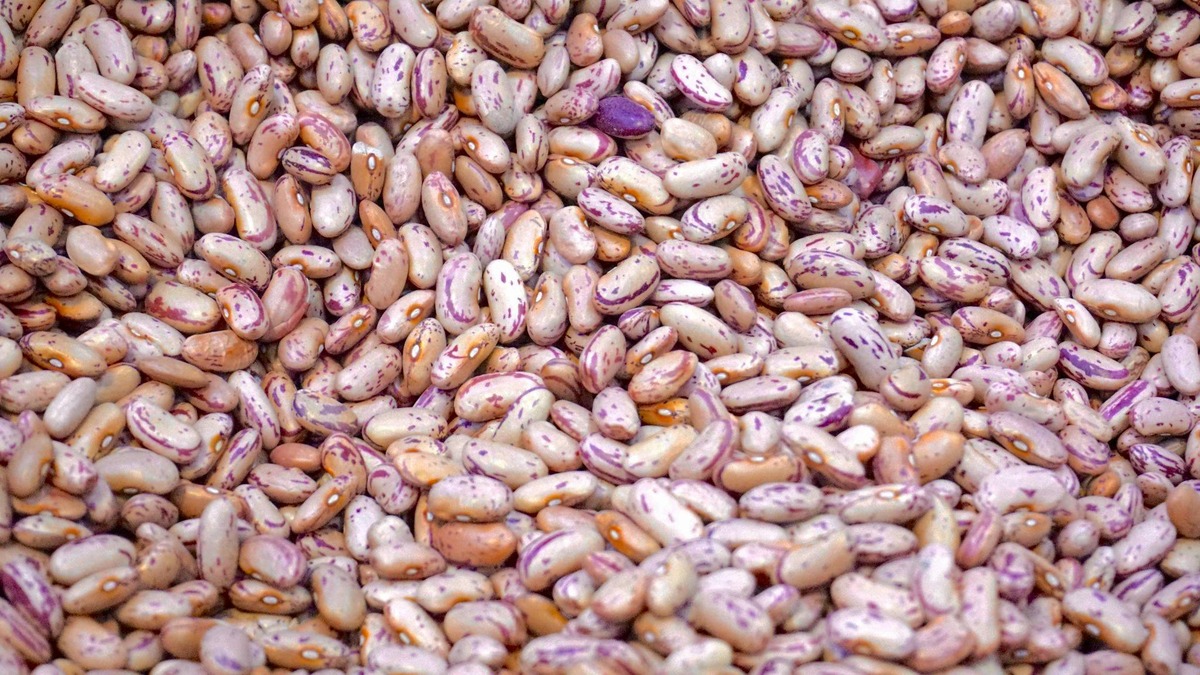The Sesame Seeds Market: A Growing Global Industry

Strong 8k brings an ultra-HD IPTV experience to your living room and your pocket.
Sesame seeds, known for their nutty flavor and rich nutritional value, are one of the oldest oilseed crops in the world. They have been cultivated for over 3,000 years, used both as a source of edible oil and as an essential ingredient in a variety of foods. Today, sesame seeds are more popular than ever, thanks to their nutritional benefits, versatility in cooking, and growing demand for healthy, plant-based ingredients.
The global sesame seeds market is expanding rapidly, driven by rising consumer awareness of health and wellness, the increasing popularity of plant-based diets, and growing demand from industries like food and beverages, cosmetics, and pharmaceuticals. In 2023, the market was valued at around $6 billion and is expected to grow at a compound annual growth rate (CAGR) of 4-5% over the next five years.
This blog explores the sesame seeds market in detail, examining the key factors driving growth, the primary applications of sesame seeds, the challenges facing the industry, and the future trends that will shape the market in the coming years.
1. Overview of Sesame Seeds and Their Varieties
Sesame seeds come in several varieties, including white, black, and brown seeds. Each type has unique characteristics and applications:
White Sesame Seeds: These are the most commonly used sesame seeds. They have a mild, nutty flavor and are often used in baking, cooking, and as a topping for bread, bagels, and pastries. White sesame seeds are also the primary source of sesame oil.
Black Sesame Seeds: Known for their bold flavor and higher antioxidant content, black sesame seeds are popular in Asian cuisines. They are often used in desserts, sauces, and as a garnish for dishes like sushi.
Brown Sesame Seeds: Brown sesame seeds are slightly less common and have a flavor that falls between the mildness of white sesame seeds and the robust taste of black sesame seeds. They are used in a variety of food applications, including sauces and spreads.
Sesame seeds can also be classified as hulled or unhulled. Hulled sesame seeds have had their outer shell removed, giving them a smoother texture and lighter taste, while unhulled sesame seeds retain their outer shell, providing a higher fiber content and a slightly bitter flavor.
2. Key Applications of Sesame Seeds
Sesame seeds are incredibly versatile and have a wide range of uses across several industries:
a. Food and Beverage Industry
The food and beverage industry is the largest consumer of sesame seeds. They are used in various products, including:
Edible Oil: Sesame oil, extracted from sesame seeds, is a popular cooking oil in many parts of the world. It is widely used in Asian, Middle Eastern, and African cuisines due to its distinct flavor and high smoke point.
Tahini: Tahini is a paste made from ground sesame seeds and is a staple in Middle Eastern and Mediterranean cuisines. It is used in dishes like hummus, baba ghanoush, and salad dressings.
Baked Goods: Sesame seeds are often sprinkled on top of bread, bagels, and crackers to enhance flavor and texture. They are also used in bakery products like sesame bars, sesame cookies, and halva (a sweet confection).
Snack Foods: Roasted sesame seeds are popular as a snack on their own or as an ingredient in energy bars, trail mixes, and granola.
b. Cosmetics and Personal Care
Sesame oil is widely used in the cosmetics and personal care industry due to its moisturizing, anti-inflammatory, and antioxidant properties. It is found in products like skin creams, lotions, hair oils, and sunscreens. Sesame oil’s ability to penetrate the skin and provide long-lasting hydration makes it a valuable ingredient in skincare formulations.
c. Pharmaceuticals and Nutraceuticals
Sesame seeds and sesame oil are used in traditional and modern medicine for their health benefits. Sesame oil is rich in antioxidants, vitamins, and minerals, making it a valuable component in dietary supplements and nutraceuticals. In Ayurvedic medicine, sesame oil is used for its therapeutic properties, such as reducing inflammation, promoting joint health, and improving skin health.
d. Animal Feed
Sesame seed meal, a by-product of sesame oil extraction, is a high-protein feed used in livestock farming. It provides essential nutrients to animals and is often used as a supplement in poultry, cattle, and fish feed.
3. Key Market Drivers
Several factors are driving the growth of the sesame seeds market:
a. Health and Wellness Trends
Consumers are becoming increasingly health-conscious, and there is growing demand for nutrient-dense, plant-based foods. Sesame seeds are rich in healthy fats, protein, fiber, and important micronutrients like calcium, magnesium, and iron. They are also high in antioxidants, which can help reduce inflammation and improve heart health. As more people look for healthier alternatives in their diets, sesame seeds are gaining popularity as a superfood ingredient.
b. Rising Demand for Plant-Based Foods
The shift toward plant-based and vegan diets is another key driver of the sesame seeds market. As consumers seek plant-based sources of protein and healthy fats, sesame seeds and sesame-based products, such as tahini and sesame oil, are becoming increasingly popular. This trend is especially prominent in North America and Europe, where demand for plant-based foods continues to grow.
c. Growing Popularity of Ethnic Cuisines
The increasing popularity of ethnic cuisines, such as Middle Eastern, Mediterranean, and Asian, has boosted demand for sesame seeds. Products like tahini, hummus, sesame oil, and sesame-flavored snacks are becoming mainstream, particularly in Western markets. This trend is driving sesame seed consumption in both the foodservice and retail sectors.
d. Expansion of the Cosmetics and Personal Care Industry
The cosmetics and personal care industry is another significant driver of sesame seed demand. As consumers seek natural and organic skincare products, sesame oil’s moisturizing and antioxidant properties are being incorporated into a wide range of beauty and personal care products.
4. Challenges Facing the Sesame Seeds Market
Despite its growth, the sesame seeds market faces several challenges:
a. Climate Sensitivity and Crop Yield Variability
Sesame seeds are highly sensitive to weather conditions. Droughts, floods, and extreme temperatures can negatively impact crop yields, leading to supply shortages and price volatility. This is a particular concern in major sesame-producing regions like Africa and India, where small-scale farmers rely on seasonal rains for crop production.
b. High Labor Costs
Sesame seed farming is labor-intensive, especially in regions where manual harvesting is still the norm. This makes sesame seed production expensive compared to other oilseeds. Mechanization is being introduced in some areas, but it remains a challenge for smaller farms and developing regions.
c. Market Fragmentation
The global sesame seeds market is highly fragmented, with numerous small-scale producers across Africa, Asia, and Latin America. This fragmentation can lead to inconsistencies in quality, supply chain inefficiencies, and price fluctuations. Additionally, sesame seed exporters must navigate varying regulations and quality standards in different markets.
5. Future Trends in the Sesame Seeds Market
As the sesame seeds market continues to grow, several trends are expected to shape its future:
a. Sustainable and Organic Production
With increasing consumer demand for organic and sustainably sourced food products, there is a growing trend toward organic sesame seed farming. Organic sesame seeds are free from synthetic pesticides and genetically modified organisms (GMOs), making them more attractive to health-conscious consumers. Sustainable farming practices are also gaining traction, with producers adopting water conservation techniques and reducing their environmental impact.
b. Innovative Food Products
Food manufacturers are increasingly incorporating sesame seeds into innovative products, such as sesame-based snacks, protein bars, plant-based dairy alternatives, and healthy spreads. As consumer interest in plant-based foods continues to grow, sesame seeds will play a larger role in new product development.
c. Increased Mechanization
To address labor costs and improve crop yields, mechanization is expected to increase in sesame seed farming. This includes the use of advanced harvesting equipment and irrigation systems that optimize water usage. Mechanization will help boost sesame production, especially in regions where labor is a limiting factor.
Conclusion
The sesame seeds market is a dynamic and growing industry, driven by rising consumer interest in health and wellness, plant-based diets, and the demand for natural ingredients in food and personal care products. While the market faces challenges such as climate sensitivity and labor costs, the future looks promising, with trends toward organic farming, innovative food products, and increased mechanization.
As global demand for nutrient-dense, plant-based foods continues to rise, sesame seeds are well-positioned to remain a staple ingredient in diets and industries around the world.
Note: IndiBlogHub features both user-submitted and editorial content. We do not verify third-party contributions. Read our Disclaimer and Privacy Policyfor details.






